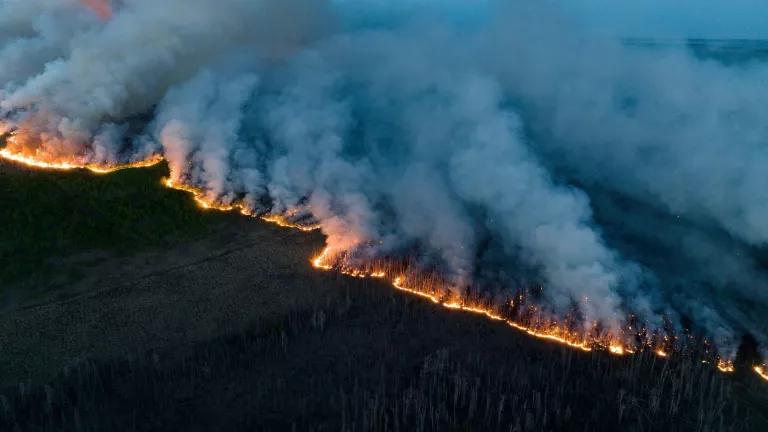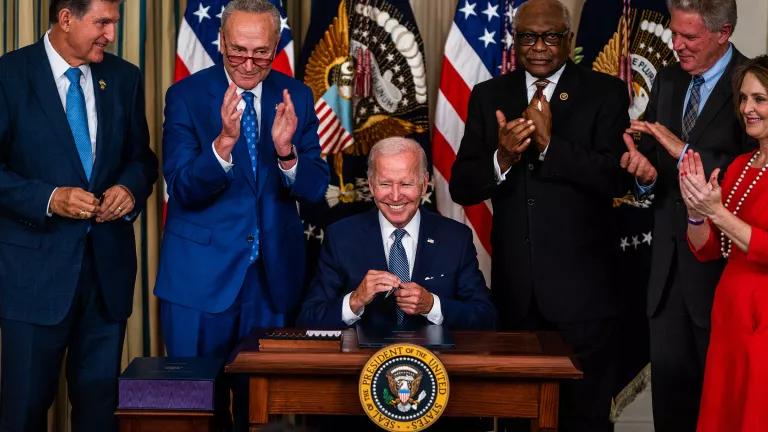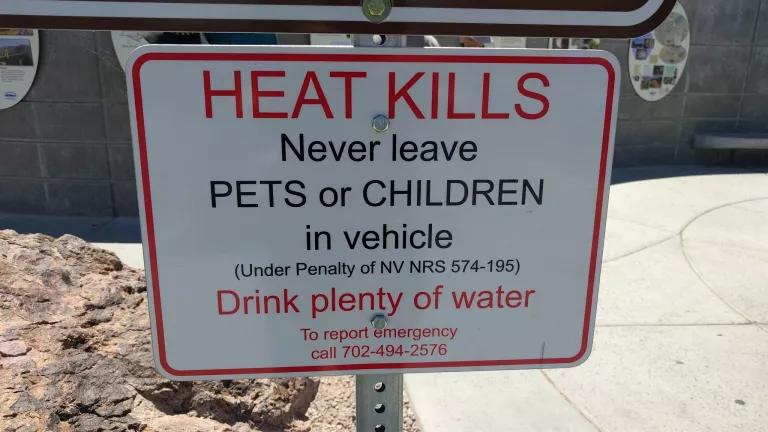2021: A Turning Point on Climate and Health Adaptation?
The Build Back Better Act is a historic investment in climate and health adaptation.
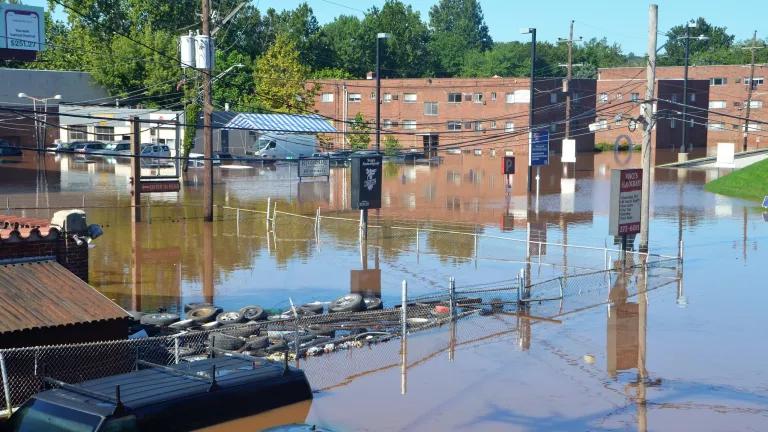
Flooding in Norristown, Pennsylvania after Hurricane Ida, 2021.
Part of NRDC's Year-End Series Reviewing 2021 Climate & Clean Energy Developments
This has been a brutal year for climate-related injuries, illnesses, and deaths. The tragedies of the Pacific Northwest heat dome, Hurricane Ida, and even the heat-related deaths of a family of hikers reinforced that climate change is already here, and threatens everyone’s health.
The United States is still woefully unprepared for this health crisis. But could recent climate adaptation efforts by the Biden-Harris administration and Congress start to turn the tide? There’s reason to hope—so long as decisionmakers keep the momentum going.
Here are some of the promising steps we saw in 2021.
Treating heat like the deadly threat it is
Adaptation measures to help people survive and thrive in the face of rising temperatures typically get short shrift by decisionmakers, even though heat is the leading weather-related killer in the United States.
The administration in July started to give heat its due by forming an Interagency Working Group on Extreme Heat, which will coordinate and improve the federal response to this deadly threat.
We also saw legislative progress. In July, Senator Markey and Representative Crist introduced the Preventing HEAT Illness and Deaths Act, which could help fill key information gaps and fund community heat-health initiatives. The Build Back Better Act passed by the U.S. House of Representatives in November also contains billions of dollars of funding to help communities beat the heat, including nearly $9 billion in grant funding that can be used to strengthen local heat planning, install neighborhood cooling measures, and more.
One of this year’s biggest climate and health stories came from the Occupational Safety and Health Administration (OSHA). OSHA started a process to develop the first-ever national heat safety standard for workers; the agency is accepting comments until January 26 on how to structure the rule.
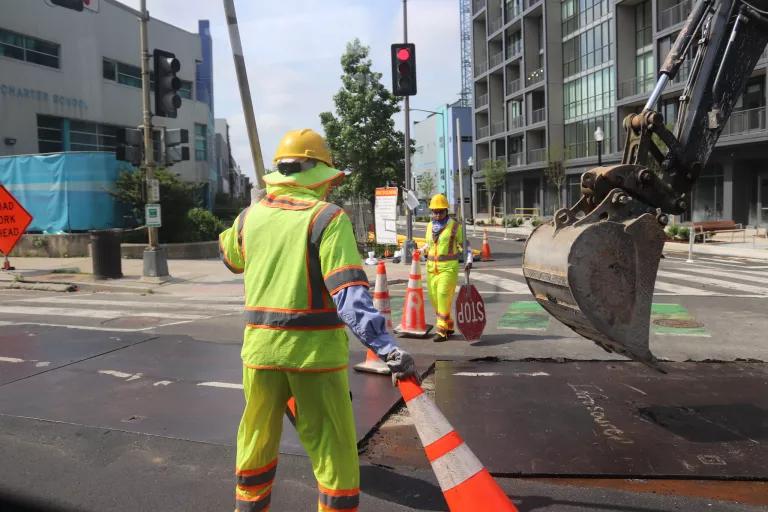
Construction crew in Washington, DC, June 2021.
Importantly, Build Back Better makes a more than $700 million investment in OSHA's ability to develop standards like the heat stress rule in a timely fashion, and then to enforce them. As workers in California know, the best climate-related safeguards in the world don’t matter unless they’re enforced.
Strengthening America’s public health departments
A 2020 study found that just 40 percent of state public health departments and fewer than 4 percent of county and city departments provide clear climate change information on their websites. The proportion of departments engaged in protective interventions is probably even lower—especially as fallout from the COVID-19 pandemic continues to ravage the public health workforce.
One of the most important things the federal government can do to build a climate-resilient public health system is to help state, local, territorial, and tribal health departments deliver the basics. The House version of Build Back Better contains $7 billion for “core public health infrastructure” such as a well-trained workforce and the ability to track emerging health threats.
Public health departments also need funding specifically for climate adaptation, which is where the U.S. Centers for Disease Control and Prevention (CDC) comes in. President Biden’s Fiscal Year 2022 budget released in May included a $100 million plus-up (a 1,000 percent increase!) for CDC’s Climate and Health Program, the only direct federal support for climate adaptation at subnational health departments. That request is in the hands of Congress, which has yet to finish its work to fund the government.
Preparing federal agencies for an even more dangerous future
As I wrote a couple of weeks ago, 26 federal agencies also reinvigorated their efforts to keep their doors open and services flowing in a climate-changed world by releasing new climate adaptation plans. Health and safety are a central part of the plans—from the federal workers on the front lines of disasters to every U.S. resident who depends directly or indirectly on federal services or funding. (Hint: That means all of us.)
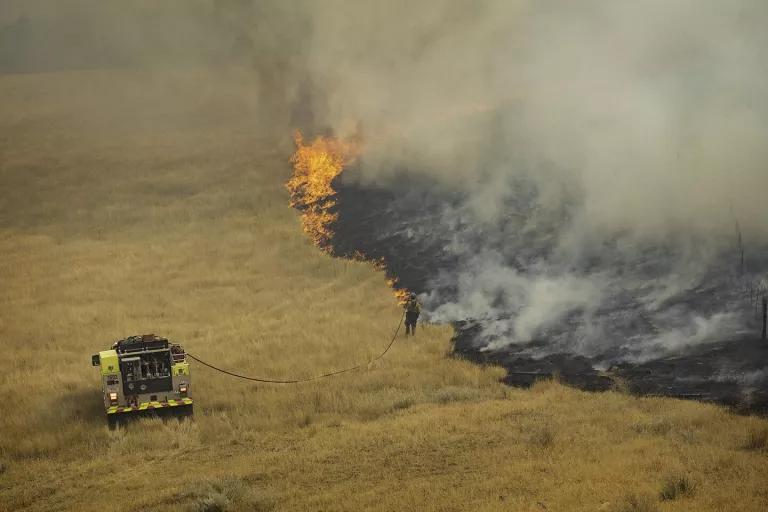
Federal workers fighting the Harris Fire, Montana, 2021.
Tackling health inequities
The administration has taken several initial steps to reduce the inequitable harm from air and water pollution, tackle disparities in climate resilience funding, and increase the capacity of marginalized communities to stay safe from heat and wildfire smoke.
There’s no quick fix, however, for the decades of injustice that have put and kept certain communities in harm’s way. President Biden recognized that in an early executive order when he directed Health and Human Services to create an Office of Climate Change and Health Equity (OCCHE). OCCHE’s priorities include, among other things, addressing health disparities exacerbated by climate impacts and fostering innovation in adaptation for disadvantaged communities.
OCCHE, like CDC, is underfunded. That’s why we joined 32 health, environmental justice, and scientific organizations last month on a letter calling for more funding for this crucial office.
Together, the Build Back Better Act and the administration’s efforts are the most significant funding and policy action ever for climate and health adaptation. But as recent assessments by the World Health Organization, the Lancet Countdown, and the Intergovernmental Panel on Climate Change clearly lay out, we have a long way to go. The Biden-Harris administration and Congress must keep the metaphorical climate adaptation fires burning bright, lest we be consumed by the actual flames of the climate crisis.


